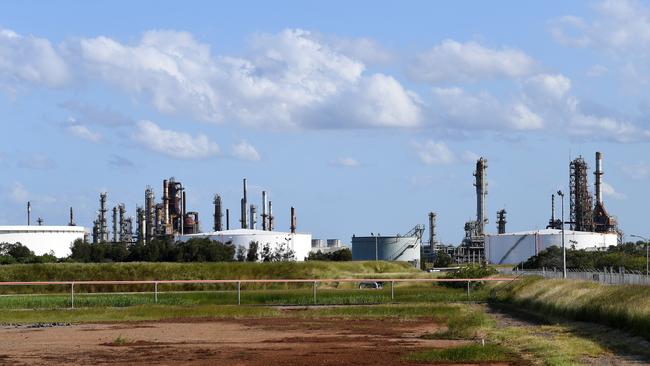Ampol’s Lytton refinery trims losses but future in doubt
The future of one of Australia’s three remaining oil refineries is still in doubt despite a smaller than expected quarterly loss.

Ampol’s beleaguered Lytton oil refinery posted a smaller loss than expected in the fourth quarter of 2020, but questions still surround its long-term survival despite a government assistance package for the industry.
In a statement released on Thursday, Ampol Limited – previously known as Caltex Australia – said the Brisbane-based refinery’s earnings before interest and tax, on a replacement cost of sales operating profit (RCOP) basis, was $4m.
It brings the refinery’s full-year loss to $145m on a RCOP basis, which is $20m less than the consensus forecast by industry analysts after a year of falling demand and considerable margin pressure.
But Ampol said it would still push forward with a comprehensive review of the refinery’s future due to be handed down in the first half of this year, which is examining the prospect of permanently shutting down the refinery and turning the site into a full-time oil import terminal.
“Economic conditions in 2021 remain uncertain as a result of continued COVID-19 impacts on international and domestic demand, further depressing already soft regional refining margins,” the company said.
“The strengthening Australian dollar experienced over recent months also works against the available LRM when expressed in Australian dollars.”
LRM, or Lytton refiner margin, measures the difference between the market value of importing a standard Lytton refinery basket of products and the cost of importing the crude oil required to make that product basket.
The company said LRM in the fourth quarter was $US5.13 per barrel, underpinned by a low cost of crude oil that supported refiner margins above the Singapore weighted average margin of $US4.73 per barrel.
Refinery production in the fourth quarter was 1.369 billion litres, bringing total annual production to 3.469 billion litres of fuel, down from 5.8 billion litres in 2019.
RBC Capital Markets analyst Gordon Ramsey said the results showed refining margins were recovering, but noted headwinds remained.
“We view this as a promising fourth-quarter result for Ampol, in what is a challenging period to navigate for the refining business,” he said.
“Ampol headwinds over 2021 include a higher A$/US$ exchange rate, which adversely impacts the Ampol optimisation program and the fact jet fuel demand remains low.
“Normally jet is up to around 15 per cent of Ampol’s refining output, but around 75 per cent of jet fuel sales are underpinned by international flight sales and this remains severely restricted from global COVID-19-related lock downs.”
The potential closure of the refinery represents a threat to Australia’s national fuel security.
That number is due to drop to three from next year after BP announced it would convert its Kwinana refinery to an import terminal later this year.
Just over 20 years ago Australia had eight refineries producing 95 per cent of the domestic market’s needs.
The government has offered the remaining refineries a 1c per litre subsidy until June 30, when a more comprehensive $2.3bn 10-year subsidy plan for the remaining three refineries is due to come into effect.
But Ampol has yet to accept the bridging subsidy, stating it wouldn’t participate in the scheme until a final decision is made on the future of the Lytton refinery.
“Ampol will defer a decision on receipt of the production payment until it becomes clear that Ampol can meet the terms of the production payment, which is likely to be when a final decision is made on the future of the Lytton refinery,” CEO Matthew Halliday said in December.
“Ampol will continue to engage constructively with the government and yesterday’s policy announcement will be one of many considerations incorporated into the ongoing refinery review process.”
Shares in Ampol closed at $28.58, up 0.11 per cent.


To join the conversation, please log in. Don't have an account? Register
Join the conversation, you are commenting as Logout